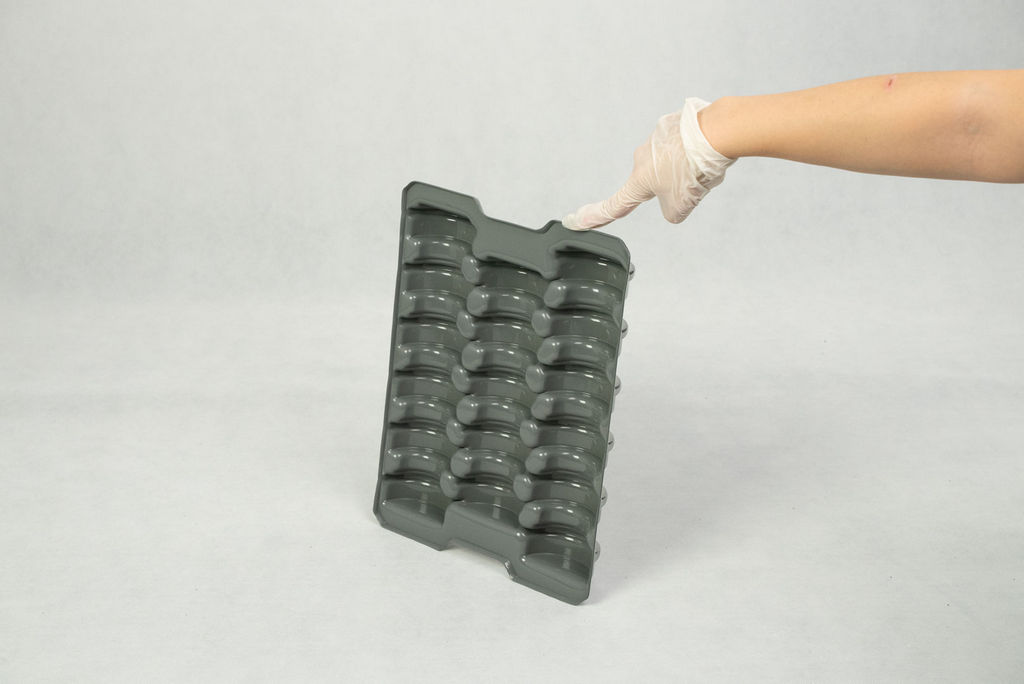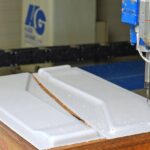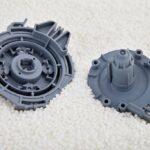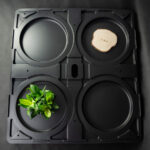Designing and making molds is a key stage in the vacuum thermoforming process. At Geo Globe Poland, we carry it out comprehensively - from concept to 3D documentation to finished mold and production. With our own machinery, quality lab, experienced design team and 30 years of experience, we are able to guarantee precision, shorter implementation time and customized solutions.
In this article you will learn:
- How are custom aluminum molds made?
- What materials are the molds made of?
- When is aluminum, resin, and MDF used?
- How does the mold making process go from design to production?

Custom aluminum molds - what is worth knowing?
In the vacuum forming process, the mold plays a key role. It determines the precision and quality of the finished part. Therefore, its execution requires not only experience, but also the right choice of material. In practice, three basic solutions are used: aluminum, resin and MDF.
Aluminum molds is the most common tool of choice for mass production. Aluminum is durable, dimensionally stable and perfectly suitable for CNC machining. As a result, the mold can be used repeatedly, maintaining the accuracy of the part's reproduction even in large series. This is why aluminum is the standard in industries requiring repeatability and reliability.
Resin molds are made by the casting method. They mainly work well at the prototyping stage and for short test runs. Their biggest advantage? They provide a relatively fast manufacturing process and give the opportunity to verify the product concept without involving the cost of manufacturing aluminum molds. This solution allows you to minimize risks before the start of target production.
MDF molds is an economical option, often used in pilot projects. MDF is an easy-to-machine material and relatively inexpensive, so such molds are made when you need to test a concept or prepare a small series of details. Although they don't match the durability of aluminum molds, they allow you to move quickly from design to the first tests.
Design of plastic parts - How is the making of the mold?
Making a mold is a multi-step process in which the selection of the right technology and material is crucial. At Geo Globe Poland, we focus on precise and customized solutions.
- Aluminum molds and MDF are created by milling on CNC machines, which guarantees high accuracy, dimensional stability and the ability to reproduce even very complex shapes. The molds prepared in this way are excellent for serial production.
- Resin molds we make using the casting method - this solution is mainly used at the stage of prototyping and in short test series. This allows the customer to quickly verify the design and optimize it before the start of mass production.
Making a mold step by step
The process of creating a vacuum thermoforming mold is a combination of design knowledge, modern technology and practical experience, and every step matters here. At Geo Globe Poland, we make sure that each step is carried out in a consistent and controlled manner to reduce the risk of errors and speed up project implementation.
What does it look like in practice?
- 3D CAD design - We begin our work by preparing technical documentation. Our design team creates a detailed 3D model, which forms the basis for further work.
- Prototyping - At this stage we check the geometry of the component and its functionality. This is the moment when the customer can still make adjustments and make sure the design meets expectations.
- Mould manufacturing - Depending on the customer's needs and the stage of the project, the mold is created by CNC milling (for aluminum and MDF) or as a resin casting (for prototypes and short series).
- Tests and revisions - The finished mold goes to technological trials. We check how it behaves in the thermoforming process and make any adjustments to ensure stability and repeatability.
- Series production - After passing the tests, the mold goes to the production line. This is where the actual plastic parts are made - ready to meet the business and quality requirements of our customers.
Molds for manufacturing plastic products - price
The cost of making a mold for thermoforming depends on many factors and is always determined individually. Each mold is designed for a specific product, its geometry and technical requirements.
What affects the final price of a mold for thermoforming?
- The material from which the mold is made
Aluminum is a more expensive solution, but at the same time it is the most durable and stable, so it is primarily used in mass production, where repeatability and long tool life are important. MDF is an economical option, which is chosen for short series or tests - it allows to verify the design quickly and cheaply. Resin, on the other hand, is a material that allows relatively fast and inexpensive preparation of prototype molds.
- Size and complexity of the geometry
The larger and more complex the mold, the higher the material and labor costs. This is affected by CNC machining time, the amount of detail or additional technical elements.
- Purpose of the mold
A mold prepared only for prototypes or a short test run will be less expensive than a mold designed for high-volume production, which must withstand hundreds or thousands of cycles.
Manufacturer of aluminum molds
At Geo Globe Poland, thanks to more than 30 years of experience in designing and manufacturing aluminum molds, we know how to combine precision with efficiency. If you are planning a new project and wondering what technology will be best - contact us and our staff will advise you on a solution tailored to your needs.
Do you have a design challenge? Contact our team - we will advise and propose a solution tailored to the conditions of your project.
Follow us on social media
You may also be interested in:
- Understanding CNC machines: What should you know about their operation and benefits?Is it possible to produce quickly, precisely and without any worries about repeatability? CNC machines make what used to require the hand of a master and many hours of adjusting, happen today in an automated, controlled and predictable way. After all, CNC machines work on projects where accuracy to tenths of a millimeter counts, as well as full control over every stage of machining. But how does this technology actually work, and why should it be used in the production of plastic components?
- The use of plastics in industryDo you know what the bottle of the iconic Family Shampoo has in common with the engine cover on a Tesla Model 3? Well, more than you might expect. Plastics today play a key role in modern industrial processes - from everyday objects to high-tech components used in automotive, aerospace and construction. Their versatility and innovation are second to none. ...
- Plastic Moldings and Thermoformed Extrusions: Advantages and Applicability in Various IndustriesIt's hard to find an industry today that doesn't need a precision-engineered, lightweight yet durable plastic component. From delicate blisters in pharmaceuticals, to transport trays on automotive lines, to ESD anti-static extrusions to protect electronics during manufacturing and logistics, thermoformed extrusions are popping up everywhere.
- Vice President Dobrochna Kochanska an official member of the Business Center ClubVice President Dobrochna Kochanska an official member of the Business Center Club

















